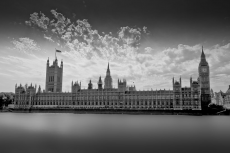
At this point in the book, John Micklethwait and Adrian Wooldridge move onto what they read as the third revolution of the state, into the welfare state. And they identify Beatrice Webb (1858-1943) as the individual who led this revolution, spreading the idea that all citizens should be provided with “enforced minimum for a civilized life”. It is an idea which is still very present with us today when one thinks about our benefits system, as well as the more recent idea, advocated by some left-wingers, of the state giving every citizen a basic income regardless of whether they are in work or not.
Yet, similar to Mill she came from a social circle which was convinced by the thinking of small government, laissez-faire economics. However, again like Mill – though much earlier on in her life, she started to question why it was that unintelligent children from upper class backgrounds were able to get a first class education, whilst bright children from poorer backgrounds were not. Her work in the slums with her cousin Charles Booth could only have further fuelled her desire for social justice for the neglected and impoverished. This desire was then strengthened further when Beatrice met and fell in love with her future husband, Sidney Webb, who also had a burning passion to help the most vulnerable in society.
However, unlike the revolutionary sorts that were popping up all over Europe, the Webbs believed that spreading their ideas throughout key groups and institutions was a better method for achieving their aims. They set up the Fabian Society, a left-wing political group intended to create an elite circle of “socialist visionaries”. Added to this, they founded the London School of Economics, “to train a new breed of social engineers from around the world”. And they also established the New Statesmen to be a key propagator of their socialist aims and values.
The Webbs might have been ideologues, but they were also highly pragmatic; sharing their ideas with all three political parties in Britain (the Conservatives, the Liberals and the Labour Party) rather than just the one which had the most immediate sympathy with their socialist thinking – i.e. Labour. Through their determination and effort they managed to convince “most educated opinion” of the idea that the state had a duty to provide a minimum of welfare and education.
Under the Liberal governments of 1905-1915, the Webb’s vision of what was to become known as the welfare state began to take shape. Under the Liberals, in 1906 children from poor households started to receive free school meal, in 1908 pensions were provided for those of old-age and in 1909 a budget to fight poverty was established. Crucially there was a change in attitude; people increasingly rejected the attitude common in Victorian times that being poor was your fault. Instead, being poor was the result of inbuilt injustices in society; not having the opportunity to better their economic circumstances.
State intervention and national planning became more and more popular amongst British politicians.
Image: By Mdbeckwith (Own work) [CC BY 3.0 (http://creativecommons.org/licenses/by/3.0)], via Wikimedia Commons

0 Comment:
Be the first one to comment on this article.